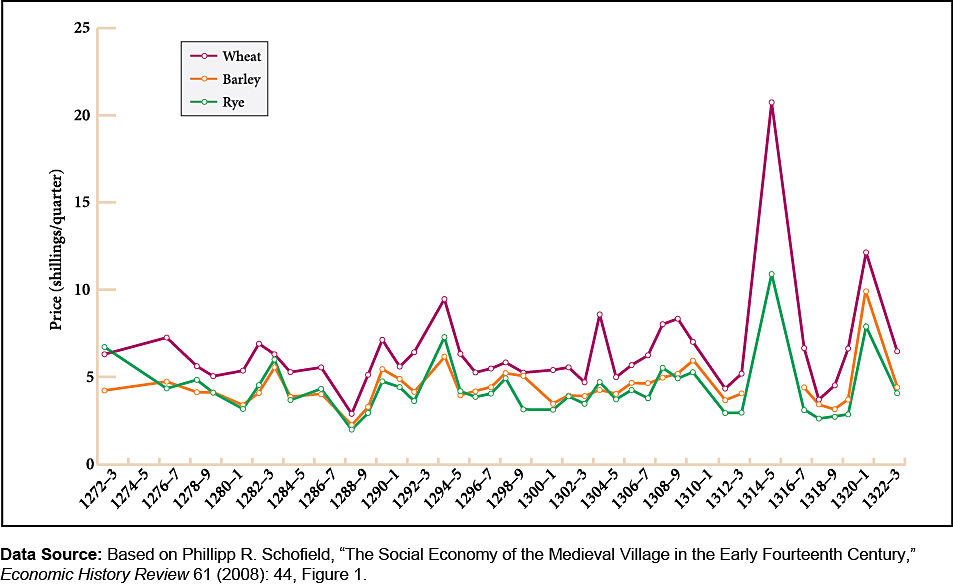Taking Measure: Grain Prices during the Great Famine
Printed Page 407
Important EventsFamine was caused not just by a shortage of food but also by spikes in prices that made it impossible for the poor to buy enough to eat. The graph shown here represents the prices of grain produced on the English manor of Hinderclay between 1272 and 1324. It is clear that prices fluctuated greatly and that during the period of the Great Famine, 1314–1315, they rose dramatically, with the years 1316–1317 particularly striking. Note that the price of wheat was always higher than the prices of barley and rye, which were considered inferior grains. (That notion would change as beer, which is made with barley, gained favor.)

Source: Based on Phillipp R. Schofield, “The Social Economy of the Medieval Village in the Early Fourteenth Century,” Economic History Review 61 (2008): 44, Figure 1.
Question to Consider
What explains the extraordinary price fluctuations shown on this graph?